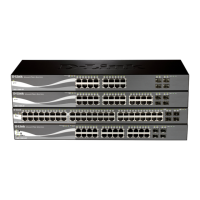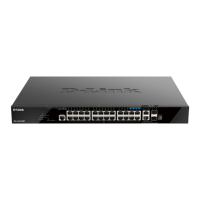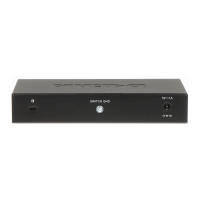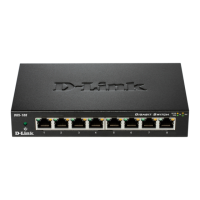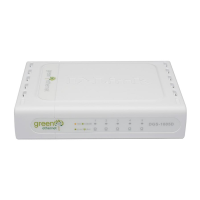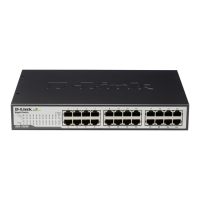DGS-1510 Series Gigabit Ethernet SmartPro Switch Web UI Reference Guide
109
or a VLAN, this signifies a loop on the network. The Switch will automatically block the port or the VLAN
and send an alert to the administrator. The Loopback Detection port will restart (change to normal state)
when the Loopback Detection Recover Time times out. The Loopback Detection function can be
implemented on a range of ports at a time. The user may enable or disable this function using the drop-
down menu.
To view the following window, click L2 Features > Loopback Detection, as shown below:
Figure 5-33 Loopback Detection window
The fields that can be configured for Loopback Detection Global Settings are described below:
Parameter Description
Loopback Detection State
Select to enable or disable loopback detection. The default is
Disabled.
Mode Select the loopback detection mode. Options to choose from are Port-
based and VLAN-based.
Enable VLAN ID List
Enter the VLAN ID for loop detection. This only takes effect when the
VLAN-based is selected in the Mode drop-down list.
Interval
Enter the interval in seconds that the device will transmit all the CTP
(Configuration Test Protocol) packets to detect a loop-back event. The
valid range is from 1 to 32767 seconds. The default setting is 10
seconds.
Traps State
Select to enable or disable the loopback detection trap state.
Click the Apply button to accept the changes made.
The fields that can be configured for Loopback Detection Port Settings are described below:
Parameter Description
Unit
Select the switch unit that will be used for this configuration here.
From Port / To Port
Select the appropriate port range used for the configuration here.
State
Select this option to enable or disable the state of the port.

